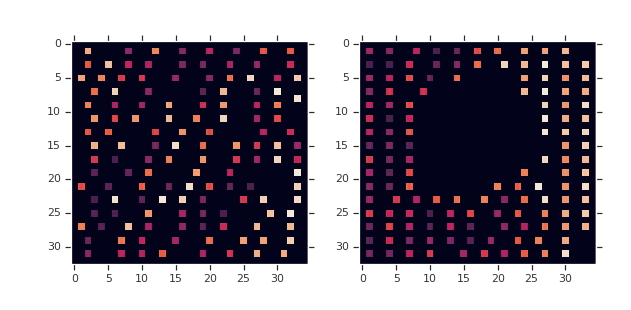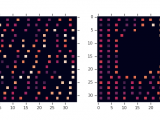
The most important news of the last week
21. Dezember 2022
The most important news of the last week
Berlin, 21.12.2022
Unfortunately still a beginner
DeepMind’s AlphaCode AI for creating software programs has rivaled human programmers in recent programming competitions.
DeepMind Technologies is Alphabet’s London-based AI laboratory and subsidiary. Its code generation system ranked in the top 54.3% on average in simulated assessments during Codeforces competitions.
AlphaCode generates code using Transformer-based language models. It was trained with publicly available code on GitHub and refined with code from coding competitions.
In a research article published in Science, DeepMind researchers said the 54.3% result was the first time an AI coding model had „performed competitively in programming competitions.“ The model’s performance, according to the study, was comparable to that of a „beginner programmer “ comparable.
Microsoft released a similar programming help last year, GitHub Copilot. It is based on OpenAI’s Codex AI model for translating natural language commands into code.
Everything so autonomous here
Uber and Hyundai-Aptiv’s Motional began offering a robotaxi service using autonomous vehicles in Las Vegas. It’s the first time self-driving cars will be made available to the public through the Uber app.
The rides, which are free on Uber X and Uber Comfort Electric, have two backup in-vehicle security operators. Uber and Motional said they could launch a fully driverless service in Las Vegas next year.
The companies also announced plans to expand the service to Los Angeles „at a later date“.
The rollout comes after Uber signed a deal with Motional to use its Ioniq 5 autonomous electric vehicles for deliveries and ride-hailing services in the United States.
As part of the 10-year commercial operating agreement, Uber will begin offering passenger rides with the robo-taxis in select markets later this year.
Motional, a driverless technology company, has also publicly launched a ride-sharing service with Lyft in Las Vegas.
Breakthrough to unlimited energy – the goal is still decades away
Scientists have created more energy in fusion than was used to start the reaction, the US Department of Energy recently announced. The update marks a major breakthrough in the quest for nearly limitless and clean energy from nuclear fusion, the same process that powers the Sun and other stars.
Scientists at Lawrence Livermore National Laboratory in California accomplished the feat known as net energy gain on December 5. In the experiment, the scientists used 2.05 megajoules of energy and achieved a power output of 3.15 megajoules, which is 50% net positive. The gain is equivalent to about 1.5 pounds of TNT, or enough to boil 2.5 gallons of water.
Ministry spokesmen, however, indicated that it was decades away from being a viable source of energy.
Are Twitter employees still interested in developing new ideas?
Twitter recently disbanded its independent advisory group, which was formed to address hate speech related to online harassment, suicide prevention, child sexual exploitation and other human rights issues. The Trust and Safety Council was due to meet with Twitter staff on Monday. Shortly before the meeting, the company informed the council members via email that the group was effectively disbanded.
Twitter said it will continue to welcome ideas from members on how to achieve its goal of making the platform a safer and more informative place to be.
When three members of the Confidence and Safety Council resigned a week earlier, they claimed that the group’s posts were ignored and that Twitter relied less on a human security team and more on automated content moderation.
Sony supplies Apple with better light sensors
On Tuesday, Apple announced that its investments in Japan’s utility grid have exceeded $100 billion over the past five years. CEO Tim Cook was in Japan’s Kumamoto Prefecture, which is known for being home to many tech and semiconductor companies, including Apple chip supplier TSMC and iPhone camera sensor maker Sony.
Cook, who recently visited Sony’s sensor factory in Kumamoto, said Apple has been using Sony camera sensors in iPhone models for a decade. The iPhone 15, due for launch in 2023, is expected to feature Sony’s latest „state-of-the-art“ image sensors, which capture more light by doubling the saturation signal level in pixels, resulting in improved low-light performance.
Sony is now among 29 Japanese suppliers that have pledged to transition to renewable energy for Apple-related operations by 2030. Others are Fujikura, Sumitomo Electric Industries, Murata Manufacturing and Keiwa.
The four-year-old Lensa app is still magically attractive
AI art and photo editing apps dominate Apple’s App Store charts. Viral photo and video editing app Lensa AI took first place in the free iPhone category last week.
Although the Lensa app is four years old, more than 17 million people have downloaded it since developer Prisma Labs Inc. introduced a „magic avatars“ feature in November. In the first 11 days of this month, Lensa’s app saw 12.6 million installs worldwide, up 600% from the previous period of Nov. 20-30, according to Sensor Tower data.
Meanwhile, data shows that eight of the top 100 apps by App Store downloads this month were AI art apps. Also in the top five were the Dawn – AI Avatars app, which lets users create avatar portraits of their photos with an AI text-to-image generator, and Aiby’s AI Art – AI Generator, which also creates images and avatars generated based on text prompts.
The technology is part of a larger category known as generative AI, which relies on machine learning algorithms to create new text, images, code and other forms of content. Popular examples of generative AI tools include OpenAI’s ChatGPT, GPT-3.5, DALL-E, Stable Diffusion, and Midjourney.
According to FT, venture capital investments in generative AI startups have increased by 425% since 2020.
Intellectual Property Infringement by Text-to-Image Generators?
According to a study by researchers at the University of Maryland and New York University, text-to-image generators like OpenAI’s DALL E 2 often reproduce parts of the images they were trained on, raising concerns about intellectual property infringement of artists and artists raises others.
In their study, the researchers said they detected a „significant amount of copies“ through the AI text-to-image generator Stable Diffusion. Overall, experiments showed that the model “copied” from the training data 1.88% of the time.
A researcher, who asked not to be named, said the images produced by these diffusion models could be copies of the model’s training data, which are usually images scraped from the internet.
Although the images appear to be original, the AI generations can replicate this training data „either completely or by copying only parts of the training images,“ the researcher told TechCrunch.
Currently, it’s „virtually impossible“ to verify that an image created with Stable Diffusion is original and „not stolen from the training set,“ the person said.
It was already known that diffusion models reproduce parts of training images. But as TechCrunch notes, it was difficult to „empirically measure copying frequency“ because the models were trained on hundreds of millions of images from a variety of sources.
The findings confirm the ongoing concerns about copyright infringement in the world of generative AI.
The researcher concluded that „Artists and content creators should be absolutely alarmed that others may benefit from their content without consent.“
Google: we pay attention to a conservative approach when using AI
While Google’s AI has similar capabilities to OpenAI’s ChatGPT, the company takes a conservative approach to using AI technology in its web search, according to Alphabet CEO Sundar Pichai and Google AI head Jeff Dean. During a recent meeting, executives clarified that Google had a „reputational risk“ at stake given the more than 1 billion people who regularly rely on its search engine.
One employee asked if, given the recent popularity of the chatbot ChatGPT, Google missed an opportunity to use its own AI technology – specifically its language model LaMDA – in search results.
Dean said Google is considering building more AI into its products rather than keeping it „under the covers.“ „However, it’s very important that we get this right,“ he said.
While conversational technology „meets a need that people seem to have,“ language models still have a lot of problems to solve and „can invent things,“ Dean noted.
Pichai added that AI chatbots are an area where Google „needs to be bold and responsible, so we need to balance that.“ He noted that the next year should be a „tipping point“ for the use of AI in conversations and searches.
Google still used its LaMDA, BERT, and MUM language models to improve its search functionality. Earlier this year, it used MUM to improve Google search results for the highlighted text at the top of the results pages.


